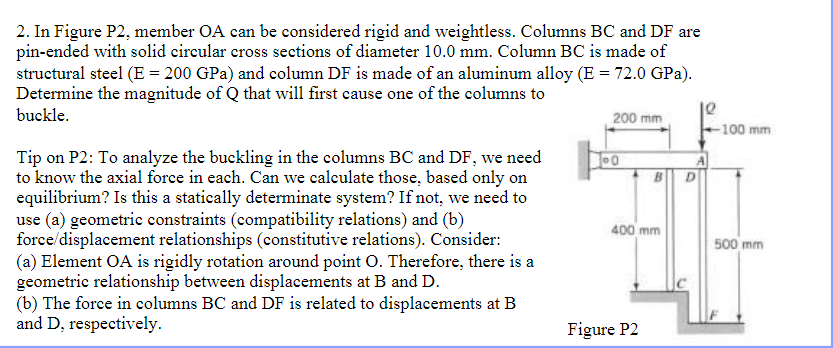Answered step by step
Verified Expert Solution
Question
1 Approved Answer
2. In Figure P2, member OA can be considered rigid and weightless. Columns BC and DF are pin-ended with solid circular cross sections of

2. In Figure P2, member OA can be considered rigid and weightless. Columns BC and DF are pin-ended with solid circular cross sections of diameter 10.0 mm. Column BC is made of structural steel (E = 200 GPa) and column DF is made of an aluminum alloy (E = 72.0 GPa). Determine the magnitude of Q that will first cause one of the columns to buckle. Tip on P2: To analyze the buckling in the columns BC and DF, we need to know the axial force in each. Can we calculate those, based only on equilibrium? Is this a statically determinate system? If not, we need to use (a) geometric constraints (compatibility relations) and (b) force/displacement relationships (constitutive relations). Consider: (a) Element OA is rigidly rotation around point O. Therefore, there is a geometric relationship between displacements at B and D. (b) The force in columns BC and DF is related to displacements at B and D, respectively. 200 mm 400 mm Figure P2 D -100 mm 500 mm
Step by Step Solution
There are 3 Steps involved in it
Step: 1

Get Instant Access to Expert-Tailored Solutions
See step-by-step solutions with expert insights and AI powered tools for academic success
Step: 2

Step: 3

Ace Your Homework with AI
Get the answers you need in no time with our AI-driven, step-by-step assistance
Get Started


